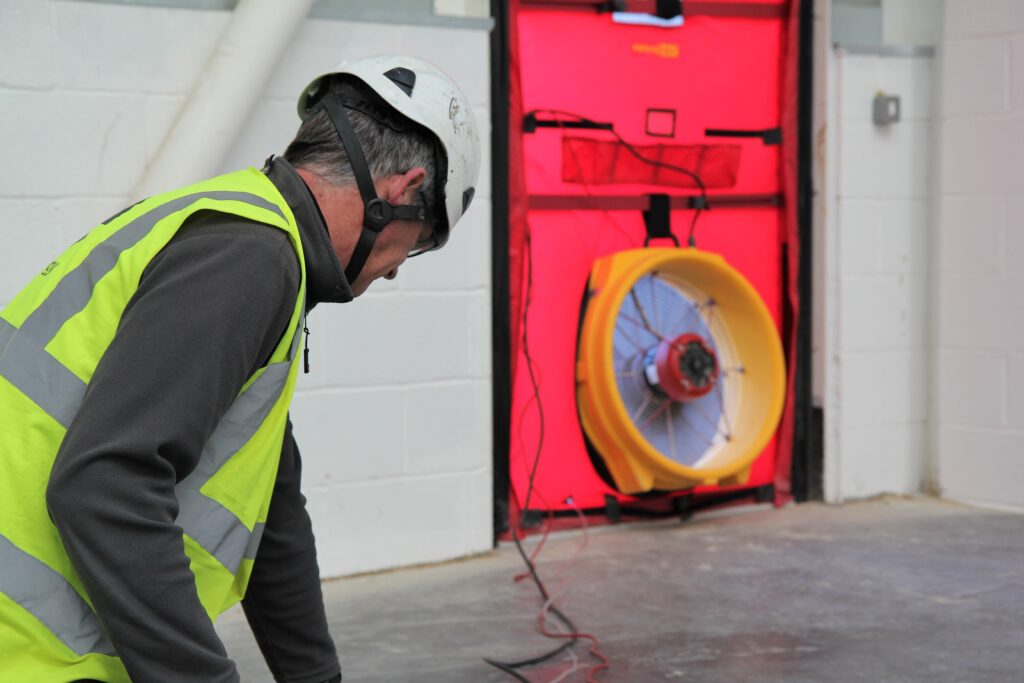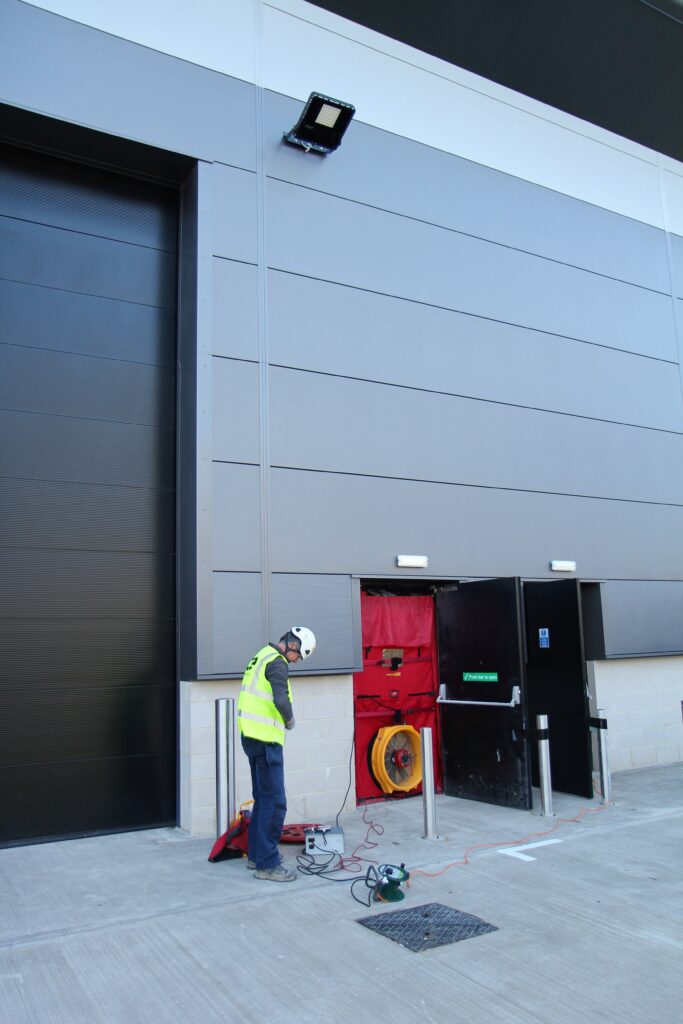The airtightness testing procedure measures the uncontrolled flow of air through gaps and cracks in the fabric of a building.

Airtightness testing it plays a key part in establishing the energy efficiency of a building. As regulations tighten it will be increasingly necessary to make design considerations for air tightness early on in a build.
On-completion testing measures the effectiveness of your air leakage strategy by establishing routes of leakage in the finished envelope.
If a test fails or there is more leakage than planned, a good test engineer will be able to indicate leakage areas, and in some cases suggest suitable remedial measures.
Airtightness & the regulations
In previous versions of the building regulations, it was possible to test a sample of dwellings across a development. However as a result of the Part L1 2010 changes, the number of residential dwellings to be tested has increased, and a ‘penalty’ has been introduced for all dwellings which have not been tested.
SAP Calculations are used to determine the energy performance of a dwelling, and it is within that assessment that a design air permeability target will be set.
This is usually a number below ’10’, but increasingly likely to be under ‘5’ due to ever more stringent regs.
For non residential schemes, the testing regime varies slightly but generally all new build commercial or public buildings will need to be tested as part of the Part L2 SBEM Calculations process.
 Airtightness testing – How many tests?
Airtightness testing – How many tests?
- For all developments: an airtightness test should be carried out on three dwellings of each type or 50%, whichever is the lesser
- For untested dwellings the as-built air permeability must be taken as the average of the test results for tested dwellings of the same type plus a margin of +2.0m³/hm²@50Pa
- Unless all dwellings are to be tested, to ensure that all dwellings meet the generally accepted target of of 5m³/hm²@50Pa, the design air permeability (DAP) should be no greater than 3m³/hm²@50Pa
Our EAS registered Assessors comply fully with Building Regulations requirements, applying ATTMA TSL1 standards with UKAS calibrated equipment.
See our other articles on airtightness:
Air Permeability Testing – Which and How Many?
Would you like to discuss your project?
Call us on 0330 055 43 05 or email be@buildenergy.co.uk.
